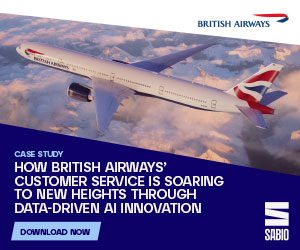An entire country relies on the critical services offered by The Post Office Ltd., which means there’s never a quiet day for its customer service team. Discover how the company upgraded its entire customer service strategy to meet growing demand—and find three best practices from the project.
The brand chose to deploy Nuance Live Assist and Virtual Assistant as the first step of its new customer service strategy for its Telecoms division—and three months later, added Nuance Call Steering to its phone channel.
#1 Meeting Digital Service Expectations Delivers Productivity Benefits Too
Live assist isn’t just about serving your customers on digital channels—it’s about serving them more efficiently.
With the introduction of Nuance Live Assist, agents at Post Office Ltd. can handle three separate customer conversations at once, rather than having all their attention absorbed by a single conversation on the phone channel.
And because Post Office Ltd. has also implemented Nuance Async Assist, customers that need to can set the pace of communication, responding to conversations in their own time.
With its agents now multitasking, the company has seen efficiency improve and handling costs fall. What’s more, there’s been a positive impact on customer experience. The company’s Live Assist service currently has an 84% CSAT score—with less than 4% of engagements escalated to phone agents.
Also, the brand’s new virtual assistant fronts the Live Assist platform, solving simple customer cases—like order status queries—without a live agent having to get involved.
#2 The Right IVR Can Make Everything Run More Smoothly
No matter how strong your digital customer service, some customers will still prefer to call. Post Office Ltd. has been meeting its customers’ needs through its phone channel for decades, but transfer rates between agents were high, often taking as long as 70 seconds to complete.
The company integrated Nuance Natural Language Call Steering in its IVR to help it make better use of its phone agents.
The solution allows customers to explain their need in their own words, and routes them accordingly—allowing agents to specialize in specific service areas, and driving faster customer resolutions.
Post Office Ltd. has even built its Data Protection Act clearance process into its Call Steering sequence, saving agents an additional task, and allowing them to focus on delivering excellent customer service.
#3 Intent Data Is Invaluable to a Self-service Strategy
If you already have an IVR and a virtual assistant in place, you’ll be sitting on a goldmine of valuable intent data captured from customer engagements. And that data can show you where and how to expand your self-service options.
Post Office Ltd. recognized its data opportunity early in the deployment of Nuance Virtual Assistant and Natural Language Call Steering. For example, during last year’s national lockdowns the Post Office Ltd. analysed the wave of COVID-19-related questions its virtual assistant was receiving.
Its customer service team quickly updated the virtual assistant with new content, helping to address the most common customer requests, and deflecting some of the increased demand away from its agents.
The team has continued to use its virtual assistant and call steering data to identify common trends in customer requests, and spot which low-level intents could be better served through a self-service engagement.
Author: Guest Author
Published On: 20th Jul 2021 - Last modified: 27th Jul 2021
Read more about - Industry News, Case Studies, Nuance














